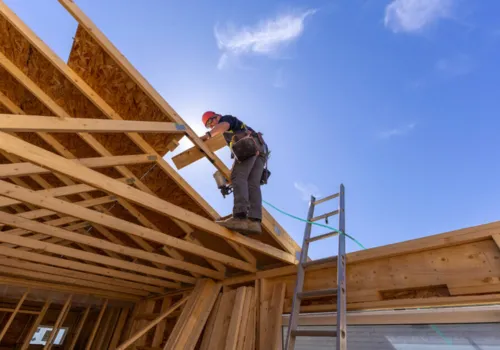
Houston (Harris County) — The U.S. housing shortage has ballooned to a record 4.7 million units, according to a new Zillow analysis of fresh Census data, highlighting the widening gap at the heart of the nation’s housing affordability crisis.

A sharp surge in construction during the pandemic’s early years boosted supply, but decades of underbuilding still overshadow the effort, leaving millions squeezed by high rents and home prices.
“The unfortunate fact is that we still don’t have enough housing in this country for people who need it,” said Orphe Divounguy, senior economist at Zillow. “Construction has helped prevent the housing deficit from ballooning, but it hasn’t yet begun to close the gap. We know what works: lower building restraints to allow for more density and less expensive housing. More of these measures at the local level can help get more homes built and begin to ease this outsize financial burden for millions of Americans.”
The mismatch shows up in daily life: 3.4 million homes sat vacant and ready to rent or buy in 2023, yet 8.1 million families were doubling up with non-relatives. While some choose roommates, many share crowded living spaces because they can’t afford a place of their own.
Even though mortgage rates have eased slightly since last year, affordability remains a steep hurdle — a typical family now needs about $17,000 more in annual income than in 2019 to buy the same house.

Builders have stepped up: 1.45 million new units were finished in 2023, rising to 1.63 million in 2024, marking the strongest pace since the housing crash of 2007. The deficit still grew by 159,000 homes in 2023 — but that’s smaller than 2022’s 257,000 increase, showing that new supply is helping slow the shortfall’s growth.
Markets with fewer building restrictions saw the fastest progress. Zillow found that metro areas with looser zoning rules met pandemic-era demand faster and saw price relief sooner than cities with stricter development limits.
Experts say the solution is clear: more density. Relaxing local zoning to allow more duplexes, townhomes and apartments — even at modest levels — could create millions of new homes, making a dent in sky-high rents and prices.
Millennials remain the largest group doubling up, at 38%, while Gen Z follows at 29%. Among major U.S. cities, New York, Los Angeles, Boston, San Francisco and Washington, D.C., have the largest housing gaps. In Texas, Dallas and Houston are also among the top five cities with the biggest deficits, with San Antonio and Austin not far behind.
In Texas, Houston’s robust job growth continues to draw new residents, adding pressure to an already tight housing market. Local builders and policymakers say they’re working on faster permitting and upzoning to allow more multi-family projects near transit hubs.
Meanwhile, national housing advocates are calling on Congress to revive or expand federal incentives for affordable housing, including more funding for the Low-Income Housing Tax Credit (LIHTC) program and streamlined permitting for high-density projects near urban cores.
“We have an opportunity to act now and fix this crisis,” Divounguy emphasized. “Otherwise, the burden only grows heavier for working families and first-time buyers.”
Originally reported by Virtual Builders Exchange.